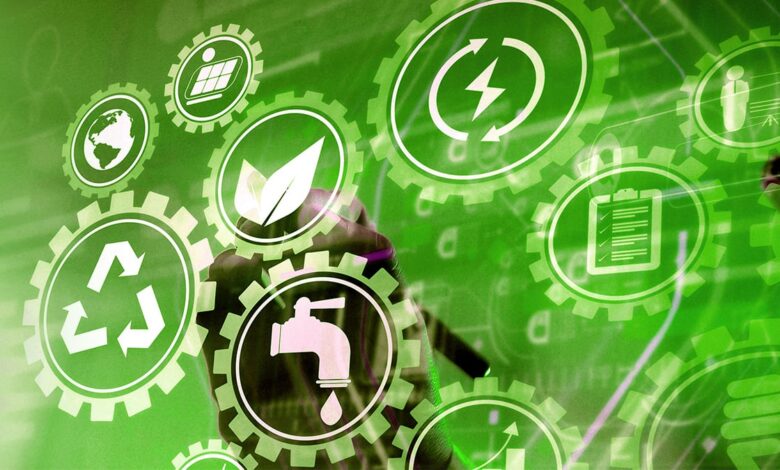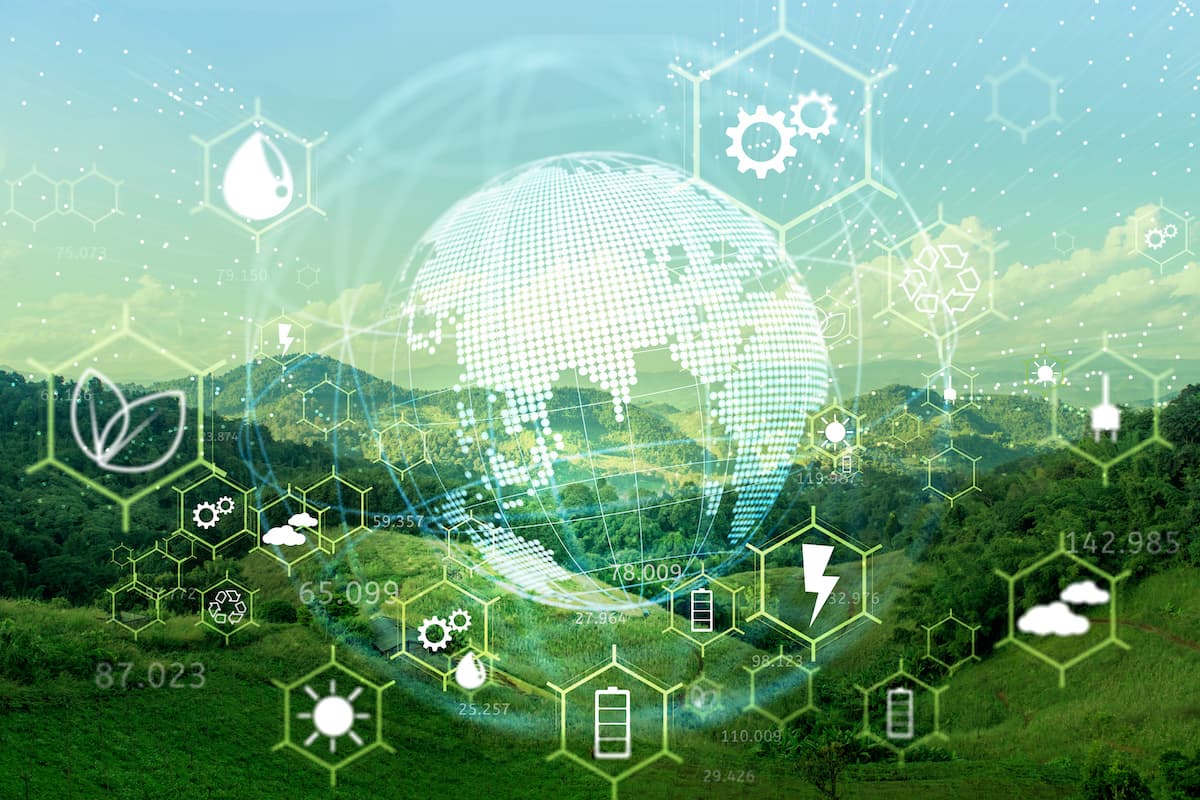Sustainable Tech Innovations Promise Environmental Progress

The technology industry, once a symbol of unbridled progress with little regard for environmental impact, is undergoing a profound transformation. A new era of sustainable tech innovations is emerging, driven by a growing recognition that a greener future is not just an ethical imperative but a business necessity. From the energy-intensive manufacturing of microchips to the vast carbon footprint of data centers, the tech sector’s environmental toll has been significant. However, a powerful shift is underway, fueled by a combination of consumer demand, regulatory pressure, and groundbreaking technological advancements. This article will take a deep dive into the most significant innovations shaping this green revolution, exploring how the industry is tackling its environmental footprint through green hardware, the rise of a circular economy, and the power of technology as a tool for environmental progress.
Greening the Hardware
The physical components of our digital world, from smartphones to servers, represent a significant portion of technology’s environmental impact. The shift towards sustainable hardware is a multi-faceted endeavor, addressing every stage of a product’s lifecycle, from sourcing to disposal.
A. The Quest for Sustainable Materials
The journey of a tech device begins with its raw materials. The extraction of minerals like lithium, cobalt, and rare earth elements is often environmentally destructive and ethically problematic. Companies are now exploring more sustainable alternatives and innovative manufacturing processes.
- Recycled and Recyclable Materials: Leading tech companies are dramatically increasing their use of recycled aluminum, plastics, and even rare earth elements in their products. This reduces the need for new mining and cuts down on waste. The goal is to move towards a “closed-loop” system where materials are continuously reused.
- Modular and Repairable Design: The “right to repair” movement has gained significant momentum, pushing for devices that are easier to disassemble and fix. Modular designs, where components can be easily replaced, extend the lifespan of products and significantly reduce electronic waste.
- Reducing Hazardous Substances: There is a concerted effort to eliminate harmful chemicals and heavy metals from manufacturing processes, protecting both the environment and the health of workers.
By making products more durable and repairable, the industry is fundamentally challenging the “planned obsolescence” model that has long dominated consumer electronics.
B. The Battle for Energy Efficiency
The factories that produce our devices and the data centers that power our digital lives are massive consumers of energy. The push for sustainability includes a laser-like focus on making these facilities more efficient and transitioning them to renewable energy sources.
- Renewable Energy Pledges: Major tech firms are committing to powering their manufacturing and data center operations with 100% renewable energy, primarily through large-scale solar and wind projects. These commitments are driving the development of new renewable energy infrastructure on a global scale.
- Optimized Production Processes: Companies are using AI and automation to optimize production lines, reducing energy consumption and material waste. Every watt saved and every gram of material reused has a massive impact when scaled across billions of devices.
- Waste Heat Recovery: The heat generated by data centers is a valuable byproduct. In some cases, this heat is being captured and repurposed to warm nearby buildings or water, turning a waste product into a resource and reducing the need for additional energy consumption.
Green Software and Data
It’s not just the hardware that needs to be green. The software and data centers that power our digital lives have an equally significant, and often hidden, environmental footprint. This is where the concept of “Green Software Engineering” comes in.
A. Energy-Efficient Code
Every line of code executed requires energy. In a world of billions of devices and trillions of computations, inefficient code can have a massive cumulative impact.
- Optimizing Algorithms: Developers are learning to write more efficient algorithms that require fewer processing cycles and less energy to perform a task.
- Language and Framework Selection: Choosing programming languages and frameworks known for their energy efficiency can significantly reduce a program’s carbon footprint.
- Minimizing Data Transfer: Data transfer across networks consumes a lot of energy. Optimizing data payloads, caching content closer to the user, and reducing unnecessary data transfers is a key strategy for green software.
B. The Sustainable Data Center
Data centers are the digital backbone of our world, but they are also enormous consumers of electricity and water for cooling.
- Liquid Immersion Cooling: A new, more sustainable cooling method involves immersing servers in a non-conductive liquid. This method is far more efficient than traditional air conditioning and can significantly reduce a data center’s energy consumption.
- Relocating to Colder Climates: Some companies are strategically locating new data centers in colder regions, like the Arctic Circle, to use the natural environment to cool their servers, reducing the need for energy-intensive cooling systems.
- Smart Power Management: AI-powered systems are being used to manage power distribution in data centers, turning off servers that are not in use and rerouting energy to where it is needed, reducing waste and increasing efficiency.
The Circular Economy

The linear “take, make, dispose” model of production is no longer sustainable. The circular economy offers a transformative alternative where resources are kept in use for as long as possible.
A. Product as a Service (PaaS)
Instead of selling a device, companies are beginning to offer a “product as a service” model. This encourages manufacturers to design products that are durable, long-lasting, and easy to repair or upgrade, as they remain responsible for the product throughout its life. This shifts the focus from selling a new gadget every year to maintaining a relationship with a customer and their device.
B. Refurbishment and Remanufacturing
The resale and refurbishment market for electronics is booming. Companies are giving old devices a new life by cleaning them up, replacing worn-out components, and selling them at a lower price. This is not only a good business model but a key part of reducing electronic waste, a growing global problem.
C. Closed-Loop Recycling
The ultimate goal of a circular economy is to create a closed loop where materials are recycled and reused endlessly. This means finding ways to recover every valuable mineral and component from a discarded device and reintegrate it into the manufacturing process. This “urban mining” is becoming a new and critical industry, turning e-waste from a liability into a resource.
Challenges and Opportunities
Despite the progress, the path to a truly sustainable tech industry is filled with significant challenges.
A. Supply Chain Transparency
The tech supply chain is global and incredibly complex. Ensuring that every component is sourced and manufactured responsibly is a monumental task. This requires:
- Traceability: Using blockchain and other technologies to trace the origin of every material from the mine to the finished product.
- Ethical Sourcing: Working with suppliers who adhere to strict ethical and environmental standards.
- Auditing and Accountability: Conducting regular, independent audits of supply chain partners to ensure compliance.
B. Consumer Behavior and Education
Consumers have a critical role to play. The constant demand for the “newest and best” gadget fuels the unsustainable cycle of production and disposal. We need to:
- Promote Responsible Consumption: Educate consumers on the environmental impact of their choices and encourage them to prioritize repair over replacement.
- Value Longevity: Shift consumer perception to value devices that are durable, long-lasting, and repairable.
- Support Sustainable Brands: Encourage consumers to support companies that are transparent about their environmental practices.
C. Technology’s Role as a Solution
The ironic truth of the sustainability shift is that the very technology that has contributed to environmental problems can also be a powerful tool to solve them. Drones can monitor deforestation, AI can optimize energy grids, and sensors can track pollution in real-time. The future of sustainable tech is not just about reducing its own footprint; it’s about harnessing its power to create a more sustainable world for everyone.
Conclusion
The technology industry is at a pivotal inflection point, moving from a period of rapid, often unchecked growth to a new era defined by a deep-seated commitment to sustainability. This transformation is not a superficial trend but a fundamental re-engineering of how we design, produce, and use our digital tools. The shift to green hardware, evidenced by the increasing use of recycled materials, modular designs, and energy-efficient manufacturing, is a direct response to the environmental damage wrought by a linear production model. Simultaneously, the focus on green software engineering, from optimizing algorithms to building sustainable data centers, addresses the often-invisible carbon footprint of our digital lives. By making our code more efficient and our data centers powered by renewable energy, we are tackling a critical and growing source of greenhouse gas emissions.
This green revolution is also about a move from a disposable culture to a circular one. The concepts of product-as-a-service, robust refurbishment programs, and closed-loop recycling are not just environmental strategies; they are innovative business models that create new value while reducing waste. However, the path ahead is fraught with significant challenges that require systemic change. Achieving true supply chain transparency is a monumental task that demands global cooperation and technological innovation. Educating consumers to prioritize longevity and repair over constant upgrades is a cultural shift that will take time and effort. Most importantly, the sheer scale of global technology consumption means that even with incremental improvements, the total environmental footprint of the tech sector is still growing. The industry needs to move beyond small-scale improvements and embrace radical, systemic change. Yet, amidst these challenges lies a profound opportunity. The very technology that has contributed to environmental problems can become our most powerful tool for solving them. From AI-powered climate modeling to satellite-based environmental monitoring, technology can be a catalyst for a greener, more sustainable future for all. The ultimate success of this shift will depend on the collective commitment of corporations, governments, and consumers to build a tech industry that not only innovates for tomorrow but does so responsibly, ensuring a healthier planet for generations to come.

